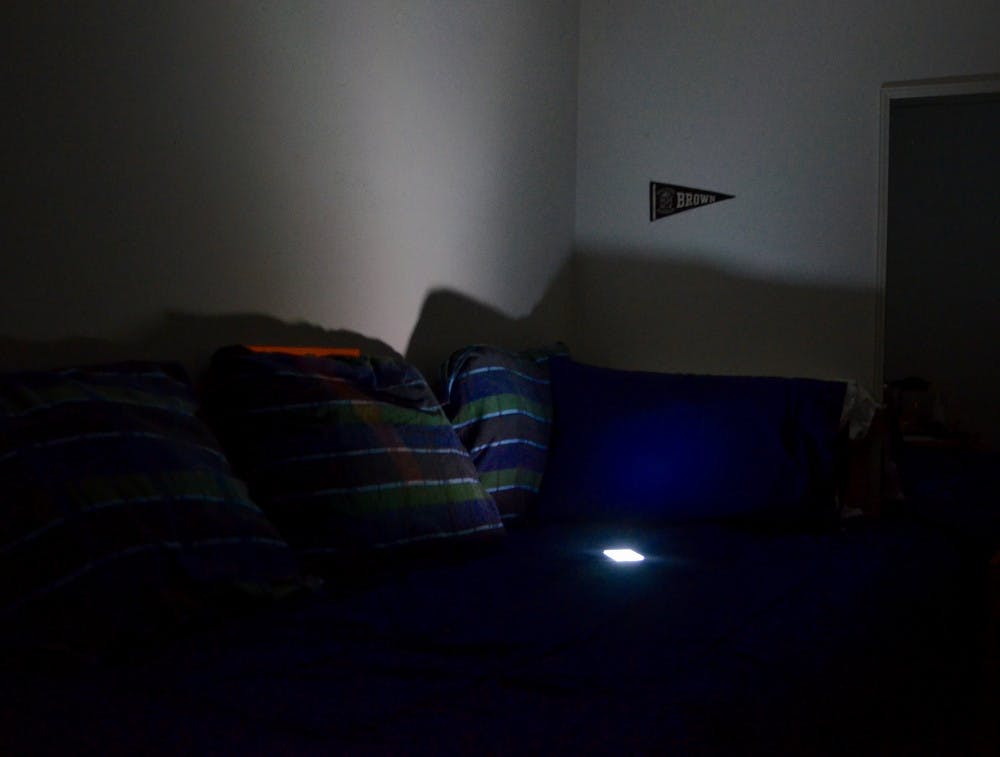Looking at bright screens before bed can impair sleep quality, especially among children between ages nine and 14.7, according to a study by University researchers, which was published online in the Journal of Clinical Endocrinology and Metabolism last month.
Headed by Professor of Psychiatry and Human Behavior Mary Carskadon, the research team examined the impact of nighttime light exposure on the production of the sleep-timing hormone melatonin. In lab-based experiments, participants were exposed to one of four light levels, measured in lux, before going to sleep — approximately 0.1 lux (the dark baseline condition), 15 lux (dim lighting), 150 lux (classroom lighting) and 500 lux (bright supermarket light). Salivary melatonin was sampled every 30 minutes.
As the researchers expected, brighter light corresponded to greater melatonin suppression, but the extent to which this occurred varied with age. The team found that among the 38 children participants who were in early to mid-puberty, one hour of dim lighting suppressed melatonin by 9.2 percent, one hour of classroom lighting suppressed the hormone by 26 percent and one hour of supermarket lighting suppressed production by 37 percent. Among the 29 teens in the post-puberty stage, the light had a lesser impact on melatonin production: Exposure to dim lighting had no impact on melatonin production, classroom lighting reduced melatonin by 12.5 percent, and the brighter supermarket lighting reduced it by 24 percent.
Carskadon explained that if light alters melatonin levels, it may also delay circadian rhythms, known as the body’s internal clock. “Parents should keep the bedroom as dark as possible for the half hour or so before bed and eliminate any screens, since most screens have a bluish tinge to them,” she added.
Retinal cells in the eye that provide information about the time of day have their own unique type of photoreceptors that are specifically tuned to short blue wavelengths, Carskadon said. The bluish light that emanates from iPhones, televisions and laptops can therefore confuse the brain’s internal clock, she said.
Though the study focused on young teens, other studies have found similar results in college students. “Using these screens pushes up your arousal level. Playing internet games, talking with your friends or being on Facebook before bed will all work against your efforts to fall asleep,” Carskadon said.
“This is solid work, and we definitely should reduce light exposure according to the results,” said Mariana Figueiro, director of the Light and Health Program at Rensselaer Polytechnic Institute’s Lighting Research Center. Among several projects, Figueiro has examined how light in nursing homes affects Alzeimer’s patients’ sleep and how light in U.S. Navy submarines affects alertness levels.
Figueiro said her only objection to the paper is that it lacks a sufficient description of the light stimulus. “If you measure levels of light at eye level, that might be a different amount of lux than if you were to measure it looking down or looking up,” she said. “It doesn’t explain how the light was delivered.”
Carskadon’s next project will investigate whether certain lighting systems can enhance circadian rhythms in middle school students and potentially improve academic performance.





